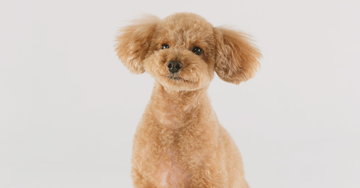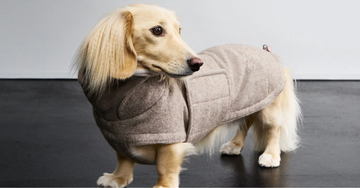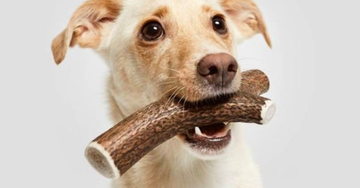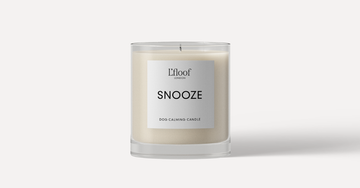It is important to understand what type of coat your dog has, as well as how to best care for it – whether you do it yourself or get help from a dog groomer.
In this post you will find useful information about your dog's coat, including care, clipping and the right brushes for your dog. All provided by B&B, experts in the field.
You can read about potty training puppies, find out what coat type your dog has, and get answers to frequently asked questions about coat care in general.
See here examples of the general fur types you can read about in this post:

Fur care by fur type
Silk fur
Silky fur is characterized by a smooth, silky topcoat and a soft undercoat – such as in Cocker Spaniels, Springer Spaniels, Setters, Cavaliers and Papillons.
The coat should be trimmed gently, not cut. Loose wool should be plucked off with your fingers, as clipping causes the coat to curl and lose its smooth appearance. To maintain the shiny and healthy coat, the undercoat should be removed thoroughly.
Recommended brushes: B&B Dutbørset or B&B Dutkarte
B&B Underuldskom
Rough-haired
Wire-haired breeds such as dachshunds, terriers, schnauzers and German Wirehaired Pointers need to be trimmed – not clipped – to maintain their rough, water- and dirt-repellent coat.
Trimming means removing the dead guard hairs with your fingers, a trimming knife or a trimming stone – never with a machine. A properly trimmed coat makes way for new, healthy, rough fur, a bit like removing moss from a lawn.
Before trimming, remove the undercoat thoroughly with the B&B tuft brush and undercoat comb. This makes trimming easier and the result more beautiful. Trimming should be done approximately every 3–4 months depending on the breed – and the coat should not be washed beforehand, as this makes it soft and difficult to trim.
Short-haired without undercoat
Short-haired breeds such as Whippet, Chihuahua (short-haired), French Bulldog, Bull Terrier, Great Dane and Danish/Swedish Farm Dog require minimal coat care, but still benefit from regular washing and grooming with dog shampoo and conditioner.
Remember to rinse thoroughly and use a massage brush for better distribution and less waste. A massage brush can also be used afterwards to remove the last loose hairs.
Dog shampoo and conditioner
Massage brush
Double coat
Double coat means that the dog has both a soft undercoat and a softer topcoat. Examples: Golden Retriever, Labrador, Collie, Shetland Sheepdog, Samoyed, Newfoundland, St. Bernard, Landseer, Chow Chow, Pomeranian, Siberian Husky, Alaskan Malamute, Keeshond, Eurasier, Pug, Finnish Spitz, Icelandic Sheepdog, Nova Scotia Duck Tolling Retriever and German Shepherd.
These breeds naturally shed twice a year. During the shedding period, thorough brushing and combing are essential – and light, ongoing grooming in everyday life will significantly reduce shedding.
For weekly care: B&B Dutbrøste or B&B Dutkarte
For daily maintenance: B&B Favorite Brush + B&B Roller Comb
When shedding: Wash twice with dog shampoo , finish with coat conditioner , leave for 3–5 minutes, rinse and comb through with a roller comb.
Short-haired with undercoat
Breeds such as the Pug, Basset Hound and Dogue de Bordeaux have short, dense coats with an undercoat that require regular but simple grooming.
If your dog has healthy skin and fur, you can freely choose between our natural and organic shampoos. For dry skin or after neutralization, a sensitive shampoo is recommended.
A B&B massage brush is ideal for massaging the skin, removing undercoat and stimulating blood circulation for a healthy, shiny coat. Also use the B&B undercoat comb both before and after the bath to remove as much undercoat as possible and give the coat a beautiful result.
Dog shampoo and conditioner
Massage brush
B&B Underuldskom
Long-haired with undercoat
Long-haired breeds without an undercoat – such as the Coton de Tulear, Shih Tzu, Lhasa Apso, Bichon Havanese, Maltese, Bearded Collie, Afghan Hound and Briard – require patient and regular grooming, especially during the first few years of life.
Although the breeds are described as long-haired without undercoat, they undergo several coat changes from puppy to adult (approximately 2–2½ years). Around 5–6 months of age, the light puppy coat begins to tangle – especially behind the ears, under the belly, in the armpits and on the legs. This is where frequent and thorough brushing is essential.
Use the B&B detangler or detangling brush to loosen the mat. Never bathe a matted coat – it will make the problem worse. Instead, use a detangle spray to loosen the mats, part them with your fingers, then brush out.
B&B Dutbrøst or B&B Dutkarte
B&B Roller comb
B&B Favorite Brush




